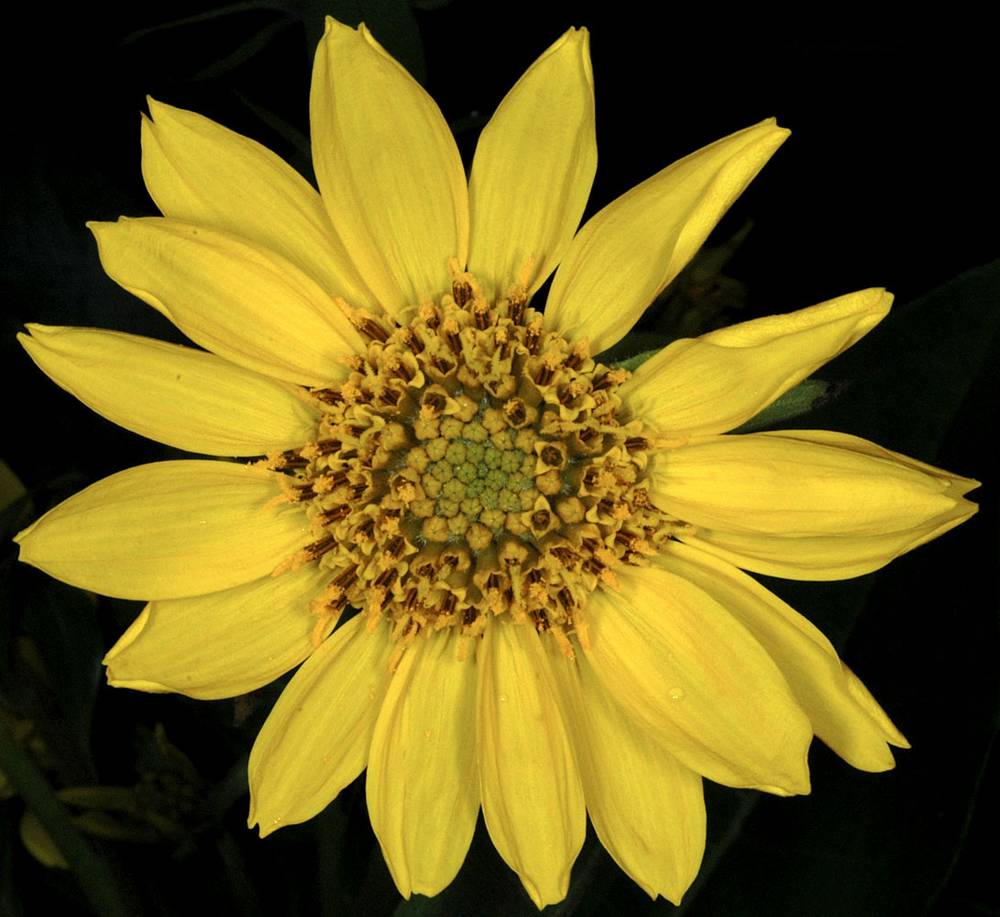Balsamorhiza macrophylla
Balsamorhiza deltoidea
large-leaf balsamroot
deltoid balsamroot
up to 35 cm, tomentose; from single taproot.
forming clumps, 14–54 cm, green, villous-hirsute, with shorter, glandular hairs.
lanceolate-oblong, 1-pinnately divided;
pinnae toothed, with teeth only on lower margins;
surfaces tomentose;
basal leaves in 1–few rosettes;
blades 12–22 × 6–8 cm;
pinnae 10–36 mm wide;
petioles 7–20 cm;
cauline blades 1.5–5 × 0.3–0.9 cm;
petioles 6–9 cm.
simple;
margins entire to toothed;
teeth rounded and apiculate;
surfaces abaxially sparsely hirsute, adaxially sparsely hirsute, villous-hirsute on veins;
basal leaves in multiple rosettes;
blades deltate, 7.5–27 × 6–16 cm, bases cordate or hastate;
petioles 10–27 cm;
cauline blades 3–7.5 × 1.1–2.7 cm;
petioles 0–8.5 cm.
with 1 terminal head.
with 1 larger; terminal head and 0–2 smaller; axillary heads;
peduncles 1–12 cm.
14–18 × 25–30 mm.
terminal 10–15 × 20–33 mm; axillary 8–10 × 11–17 mm.
14–16, yellow;
rays 35–40 × 8–11 mm.
deciduous, 11–21 on large heads, 6–9 on small heads, yellow;
rays 18–35 × 4–17 mm.
~9 mm.
5–8 mm.
ovate-lanceolate, 20–25 × 5–6 mm;
tips acuminate, tomentose.
ovate, 10–32 × 4–9 mm, villous; more densely so at bases; outer phyllaries often lanceolate; longer than inner.
8–9 mm, glabrous.
9 × 1.5 mm, glabrous.
10–12 mm.
~7 mm.
=100 ± 2.
=38.
Balsamorhiza macrophylla
Balsamorhiza deltoidea
Dry, open areas. Flowering May–Jul. 700–1400 m. BW. ID; east to WY. Native.
True B. macrophylla is a decaploid centered on the Wasatch Mountains in Utah and Idaho. The plants in Oregon and western Idaho are also high polyploids, but they differ morphologically from classic B. macrophylla in their denser pubescence and the shape of their leaves. These eastern plants have been given the name B. macrophylla var. idahoensis. However, further study will likely show that they have a different parentage than B. macrophylla s.s. The specific epithet “macrophylla” means large-leaved, as the leaves are much larger than those of the other members of section Balsamorhiza.
Grasslands, pine or oak woodlands. Flowering Mar–Jul. 50–2200 m. Casc, ECas, Sisk, WV. CA, WA; north to British Columbia. Native.
Balsamorhiza deltoidea grows west of the Cascade Range and intergrades with B. careyana in the Cascades and along the Columbia River. (See discussion under B. careyana.) It also hybridizes with B. sericea in Josephine County. Hybrids between Balsamorhiza deltoidea and B. hookeri have been given the name B. × terebinthacea but are not expected to be found in Oregon, given that the ranges of the parental species do not overlap here. The specific epithet refers to the deltoid shape of the leaves.
Abigail (Abby) Moore
Abigail (Abby) Moore
- Local floras:
BC,
CA,
OR,
WA
- Local Web sites:
CalFlora,
CalPhotos,
Flora NW,
PNW Herbaria,
Turner Photog.
WildflowerSearch
iNaturalist (observations)
USDA Plants Database
- LBJ Wildflower Center
- SEINet
- Plants of the World Online
- Encyclopedia of Life
- Wikipedia
- Google Image Search




